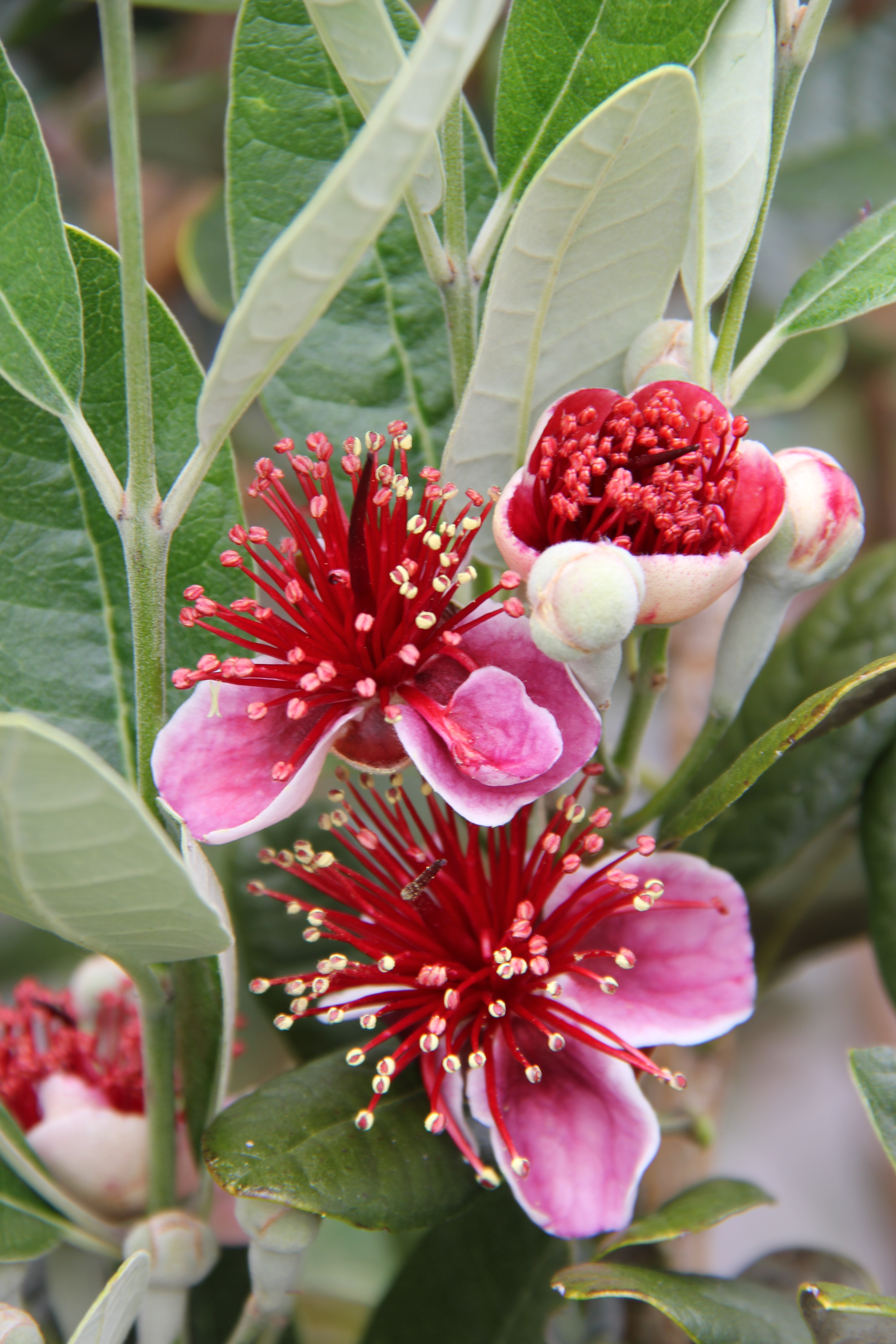Physical characteristics
A bushy,
Flowers and foliage
Produces flowers with fleshy
Preferred site
Preparation for planting
Always choose healthy, well-grown
Maintenance tips
Apply mulch
Ecological and biodiversity benefits
Attracts beneficial insects to the garden.
Pests and diseases
Watch out for fruit infected with Guava moth larvae (little maggots), these should be destroyed as they ruin fruit and can spread to other fruiting
Location at Auckland Botanic Gardens
Orchard
Interesting facts and tips
Both the flowers and fruit of the feijoa are edible. Only feijoa cultivars 'Apollo' and 'Unique' are self-fertile. All other cultivars need a second plant to help with pollination. Without this, it will not produce fruit. However, as a lot of people have a feijoa tree in their backyard you may get away with only purchasing one tree.




.jpg?width=1200&height=1200&v=1d4024dceb89e50)

.jpg?width=1200&height=1200&v=1d5569224d63650)
 .jpg?width=1200&height=1200&v=1d4024df6ce2770)
.jpg?width=1200&height=1200&v=1d55676a892f2b0)
 .jpg?width=1200&height=1200&v=1d4024e3b65f7f0)